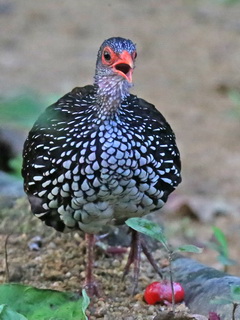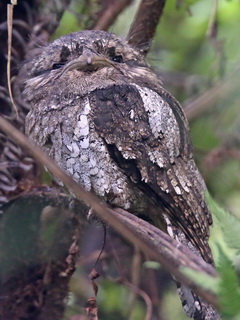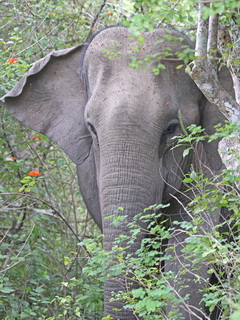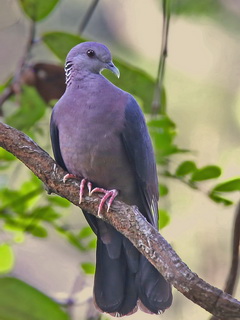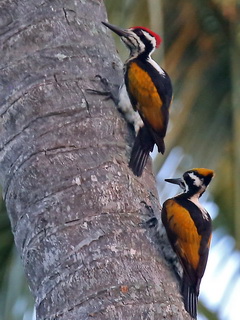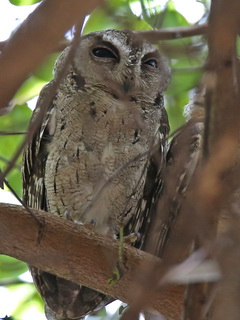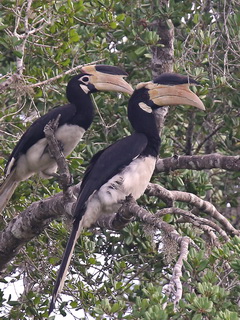Sri Lanka
Kitulgala, Sinharaja, Uda Walawe, Yala NP, Tissa area,
Nuwara Eliya, Horton Plains, Kandy.
Tour leader; Stijn De Win Group size ; max. 6 !
Feb - March '18 ; View our tour bird list. and photo report.
Top ten! To write another great story about a must visit
birding destination is very easy if you pick Sri Lanka.
Choosing your next holiday out of many thousands of
fantastic bird watching sites is another matter. However it
may be of great help to note that Sri Lanka has made it
regularly into the top ten must visit places worldwide.
Birders have voted for it in more than a few online articles
and magazines. Sri Lanka’s birdlife is most remarkable for
its high degree of endemism along with superb wintering
birds like Indian Pitta and Pied Thrush. Near-endemics
shared only with southern India are another celebrated
feature while respect for wildlife, or all life, has created
a unique bond between Sri Lankans and their natural
surroundings. Birds are abundant and often very approachable
thanks to a fascinating Buddist culture dating back
thousands of years. This is a feel good place with many well
protected National Parks and lots of ‘green’ countryside.
Infrastructure, facilities and lodging have all greatly
improved since my first visit back in 2000. Most amazingly
though, they have also added a newly discovered species
since, the Serendib Scops Owl. This highly rewarding short
tour offers lots of excitement; a superb boost to your bird
list, great wildlife sightings, your perfect introduction to
the Indian subcontinent, authentic food, a quick ‘winter’
escape, good photographic opportunities, beautiful scenery,…
a must have lifetime experience!
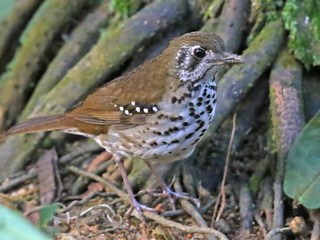
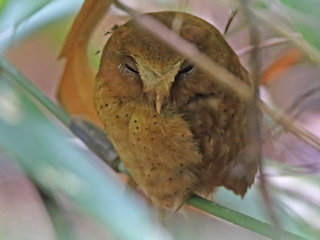
Spot-winged Thrush, Sinharaja Biosphere ReserveSerendib Scops Owl, Sinharaja
Day 1
International arrivals into Colombo. We include a first
night near the airport. This is not only great to recover
from the flight but may also produce a first few birds in
the hotel’s garden.
Day 2
Early start to Kitulgala situated on the banks of the River
Kelani. It may soon become apparent that our first 2 hour
drive will be a nice introduction to all further road
journeys on this tour; Expect a countryside that is superbly
scenic at both nature and cultural aspects, and with
refreshingly good roadside birding! Wet zone (most of the
endemics) birding starts for us at Kitulgala which has
plenty on offer in beautiful surroundings. Spot-winged
Thrush, Indian Pitta, Yellow-fronted Barbet, Sri Lanka Grey
Hornbill, Layard’s Parakeet, Orange-billed Babbler, Legge’s
Flowerpecker, Sri Lanka Hanging-Parrot, Malabar Trogon…
introductory birding Sri Lanka style! At Kitulgala we will
be after a few species that may be harder to come by at
Sinharaja like Chestnut-backed Owlet and Brown-capped
Babbler.
Day 3
Kitulgala comprises a mosaic of habitats, and exploring
these will keep our bird list at a steady growth rate this
morning. While both productive and rewarding for our tour
start, our next birding site may just be superior. No wonder
our itinerary includes only 1 night at Kitulgala and 3
nights at Sinharaja. Today we expect to arrive at Sinharaja
in time for some late afternoon birding. Our birder’s lodge
just outside the reserve has on offer; comfortable air
conditioned rooms, some of the most authentic and best Sri
Lankan food of the tour, and birds to watch in/from the
garden… last visit this included Indian Pitta, Slaty-legged
Crake, Indian Paradise-Flycatcher, Crested Hawk-Eagle, Sri
Lanka Myna and Legge’s Flowerpecker.
Day 4 + 5
Sinharaja, a designated biosphere reserve, a Unesco World
Heritage Site, a world-renowned biodiversity hotspot… or
simply 2 full days birding at Sri Lanka’s number 1 site for
endemics; Sri Lanka Blue Magpie, Red-faced Malkoha, Sri
Lanka Scaly Thrush, Sri Lanka Spurfowl, Green-billed
Malkoha, Serendib Scops-Owl, Ashy-headed Laughingthrush,
White-faced Starling, Sri Lanka Frogmouth, Sri Lanka
Woodpigeon etc. Sinharaja also has plenty other wildlife to
look out for. For example Toque Macaque, Purple-faced Langur
and Grizzled Giant Squirrel, which are nice and certainly
easy to spot mammals.
Day 6
We will spend a last morning birding at Sinharaja followed
by a mid-day drive featuring a dramatic change of scenery.
Welcome to Sri Lanka’s dry zone! Dry woodlands, open
grasslands and wetlands are teaming indeed with new birds
for the trip. And no better way for a first sample then with
an afternoon safari in open-topped jeeps at Udawalawe
National Park. This park is famed for its wild Indian
Elephants and other wildlife. Birds to look out for include
Sirkeer and Blue-faced Malkohas, Malabar Pied Hornbill,
Painted Stork, Lesser Adjutant, Sri Lanka Woodshrike and
with some luck even a Brown Fish Owl would be possible.
Day 7
For many our visit to Yala NP will be another top-highlight.
Exploring the grasslands, dry forest, wetlands and scenic
coastal lagoons of Sri Lanka’s second largest national park
on a jeep safari is a memorable experience; not least for
the high chance we have encountering one of Yala’s many
Leopards. This park indeed is well known for having the
highest density of Leopards anywhere on the planet.
Additionally, sightings of Sloth Bear are regular and there
will be some less elusive wildlife on show for sure. The
birding can be excellent too; Wooly-necked Stork, Great
Thick-knee, Ashy-crowned Sparrow-Lark, Pied Cuckoo,
Blue-faced Malkoha, Eurasian Spoonbill, Orange-breasted
Green Pigeon, Sri Lanka Woodshrike, Indian Peafowl,
Marshall’s Iora, Jerson’s Bushlark…
Day 8
The Tissamaharama area and edges of Bundala NP have lots on
offer. Reservoirs (locally known as ‘tanks’) and other
wetlands hold plenty interesting target birds; Black
Bittern, Streaked Weaver, Cotton Pygmy-Goose, Watercock,
Lesser Adjutant, Pheasant-tailed Jacana, Black-headed Ibis,
Small Pratincole. We will also be looking for a few
specialities in the mosaic of other habitats of the area;
Indian Scops Owl in lush gardens, Indian and Jerdon’s
Nightjar in dry scrub, the handsome White-naped Woodpecker
in coconut groves… my first visit back in 2000 even produced
a wintering Caspian Plover!
Day 9
After some final birding near Tissa we head to the hill
country around Nuwara Eliya. This is a place very different
from the steamy ‘Wet Zone’ jungles or open ‘Dry Zone’
habitats experienced earlier on the tour. We may now enjoy a
cool climate, cloud forest and the finest Ceylon Tea! We’ll
do quite a few birding stops looking for a set of new birds
that may include the stunning Yellow-eared Bulbul, Sri Lanka
Woodpigeon, Sri Lanka White-eyes and Sri Lanka
Scimitar-Babbler. We will also visit Victoria Park, famous
as a site for wintering Pied Thrush and Kashmir Flycatcher.
Day 10
Our visit to the cool heights of Horton Plains National Park
will not only get us into an extra sweater but also into
beautiful subtropical dwarf forest dominated by
rhododendron. Sri Lanka Whistling-Thrush must be the star
avian attraction here while other goodies include Sri Lanka
Bush-Warbler, Dull-blue Flycatcher, Yellow-eared Bulbul and
the endemic race of Indian Blackbird.
Day 11
The scenic city of Kandy and its nearby attractions must not
be missed on any tour. The rainforest of Udawattakele sits
just above the city and offers fine birding. However, with
most if not all target birds already seen at this point on
the tour, we may have the opportunity to keep our visit
brief and instead include some extra sightseeing. Kandy, Sri
Lanka’s cultural heartland, indeed would be the perfect spot
for this with the famous ‘Temple of the Tooth’ and other
great sights located in town. We should also have a little
time for a spot of –yes- shopping, as we must bring home a
few (inexpensive ha :-) packs of fresh Ceylon Tea
before we drive to the airport in Colombo to mark the end of
the tour.
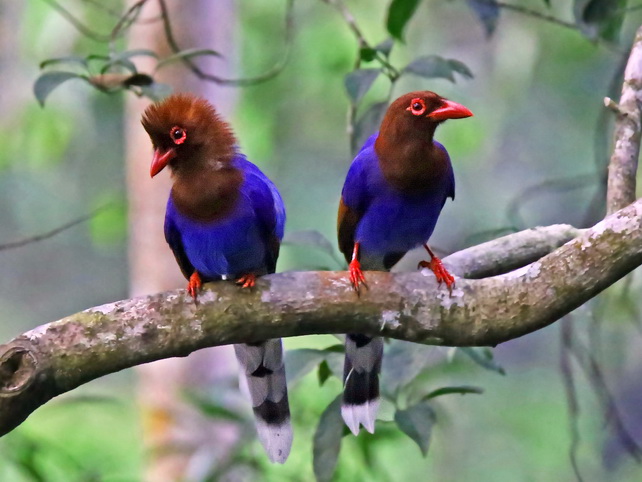
General info :
Comfortable air-conditioned accommodation in high standard
hotels with private facilities. Transport between sites by
air-conditioned van. Safari rides at 3 National Parks on
board open-sided jeeps. Walking is easy and most birding is
done on level roadside/tracks/trails. Weather is quite hot
in the lowlands but still pleasant at this time of year. We
can expect a couple cold/cool mornings and evenings in the
highlands. Some short rain showers are always a possibility
even though late Feb. and March may get us the best chance
on dry weather. Sri Lankan food is hygienically prepared and
very tasty. Some 'western' food options are available for
those struggling with the many new flavours and spices of
Sri Lankan cuisine. Excellent photographic opportunities are
a feature on this tour.
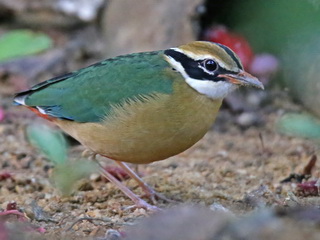
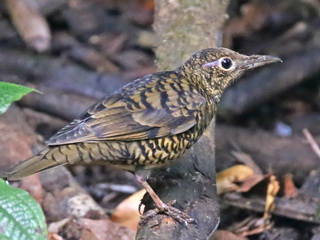
Indian Pitta at SinharajaSri Lanka Scaly Thrush
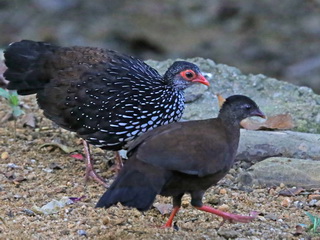
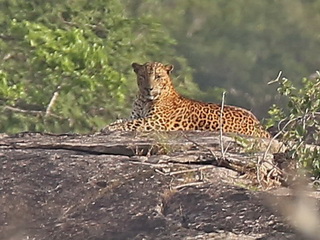
Sri Lanka Spurfowl pairYala National Park is famous for its Leopards
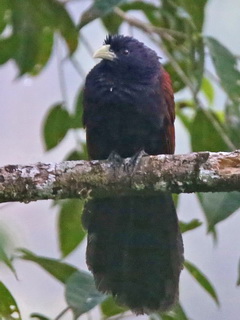
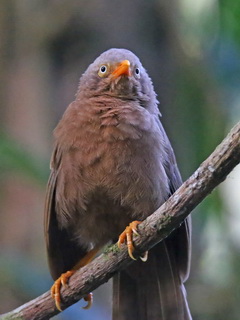
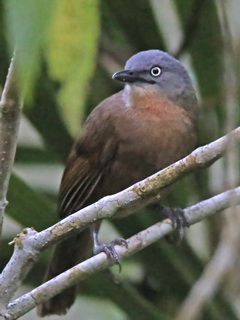
A set of Sri Lankan endemics; Green-billed Coucal, Orange-billed Babbler and Ashy-headed Laughingthrush.
Home / Top / Sinharaja Forest Reserve photo report / 2018 tour report

